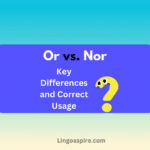The words cacoon vs. cocoon often confuse people. Though they look similar, only cocoon is the correct spelling. In this article, we’ll dive deep into understanding the differences between the two, the origins of the words, and their correct usage. We will explore cocoon in nature, culture, and design, offering examples and detailed explanations. So, if you’ve ever wondered whether “cacoon” is just a typo or a different term entirely, you’re in the right place!
What is a Cocoon? Understanding the Correct Spelling
The word cocoon refers to the silky covering that certain insects, like silkworms, create around themselves as they undergo metamorphosis. A cocoon is the protective casing where an insect, usually in its pupal stage, transforms from a caterpillar to a moth or butterfly. It’s not just a term used in biology—it carries a lot of symbolism, especially when used metaphorically to describe personal growth and transformation.
In addition to its botanical and biological meanings, cocoon is also used in design, particularly in furniture. For instance, cocoon chairs are a popular furniture trend that provides comfort, enveloping the user in a cozy and private space. Cocooning, in this sense, symbolizes isolation and self-care, creating a personal retreat for reflection or relaxation.
What is a Cacoon? The Misspelling and Its Origins
The term cacoon is simply a typographical mistake. It doesn’t exist in standard English dictionaries, and its usage is incorrect. The confusion likely arises from the fact that the word cocoon has two “c”s in it, but the word “cacoon” also seems to follow a similar pattern found in other words like “balloon” or “raccoon”. However, this incorrect spelling has no official meaning in English.
Cacoon can sometimes be seen in informal writing, but it is always advisable to use the correct spelling, cocoon, in both formal and casual contexts. There are no instances where cacoon is an acceptable alternative to cocoon in academic, professional, or everyday use.
Cacoon vs Cocoon: Breaking Down the Differences
When it comes to spelling, the difference between cacoon and cocoon is quite simple. Cocoon is the word with only one “c,” and it’s the correct form used across all contexts. On the other hand, cacoon is an incorrect spelling that should be avoided.
The meaning of cocoon is specific and well-defined. It refers to the silk casing that many insects, such as moths and butterflies, form around themselves during their metamorphosis. There is no definition or usage for cacoon, making it an error in both spelling and meaning.
The usage of cocoon is widespread and common, whether in scientific contexts to describe the pupal stage of insects or in metaphorical ones to describe personal growth and transformation. Cacoon, however, has no place in standard language use and should be corrected every time it appears.
Examples of Cacoon Vs. Cocoon in Context
In professional or academic settings, using cocoon is essential. For example, you might write, “The silkworm spins its cocoon as it prepares for the metamorphosis into a moth.” Using cacoon here would confuse the reader and make the text appear unprofessional.
On the other hand, when using cocoon metaphorically, it could read, “After a long year of challenges, she retreated into her cocoon, focusing on personal growth and self-care.” The metaphorical use of cocoon represents a time of isolation or introspection, a process of healing and transformation.
Origins of Cacoon Vs. Cocoon
The word cocoon has deep historical and botanical roots. It comes from the French word cocon, which itself traces back to the Latin cucullus, meaning a small hood or cloak. This evolution from a covering to a symbolic term for protection and growth is what makes the word so meaningful.
Cacoon, as we mentioned earlier, doesn’t have an established origin. It’s a typographical mistake that likely arose due to phonetic confusion or typing errors. The misspelling often happens because people mistakenly add an extra “c”, thinking it aligns with other similar-sounding words.
Real-World Examples of Cocoon Usage
When discussing the cocoon in natural sciences, you might come across a sentence like: “The caterpillar forms a cocoon before it emerges as a moth.” This is the classic, biological use of the term.
In interior design, cocoon has a different meaning. You might see the term used in a sentence such as: “The cocoon chair provides an intimate and relaxing space, perfect for cocooning and personal retreat.” In this context, the cocoon symbolizes comfort and isolation, providing a private space to unwind and recharge.
The Evolution of the Word Cocoon
The symbolism of cocoon has evolved significantly over the years. While it was originally a botanical term, it has also taken on a cultural and psychological meaning. In many cultures, the cocoon symbolizes the transition from one phase of life to another. The pupal stage of insects, such as moths and butterflies, represents transformation, much like the changes people go through in their lives.
The modern metaphor of “cocooning” reflects the idea of self-care, personal reflection, or retreat. People often use the term to describe the act of withdrawing from the outside world for personal growth, comfort, and rejuvenation.
Cocooning in Interior Design
In recent years, cocoon has also become popular in the world of furniture. The cocoon chair, for instance, is a piece of furniture that wraps around the user, providing them with a comforting and private space to relax. It’s a perfect example of cocooning in the context of design, offering both symbolism and practicality.
In this case, the chair is not just a place to sit but a protective barrier that envelops the user in comfort and security. The design mimics the feeling of being in a protective casing, similar to the cocoon formed by insects during metamorphosis.
Cocoon Symbolism and Cultural Significance
Cocoon symbolism is rich and varied. In many cultures, cocoons are seen as symbols of growth, transformation, and renewal. For example, in the Yoruba language, the term Kàkàùn selà refers to the concept of a metamorphosis or personal transformation, often tied to significant life events and spiritual development.
In addition to the cultural symbolism, cocoon also has practical uses in traditional medicine. For example, some cultures have used parts of the Snuffbox bean plant (Fevillea cordifolia) as a medicinal remedy, relating it to the protective properties of a cocoon.
Cocoon and the Role of Tropical Climates
Many of the insects associated with cocoons, such as caterpillars, moths, and butterflies, thrive in tropical climates. The tropical bean species, like the Snuffbox bean plant or Fevillea cordifolia, are also native to these regions and provide a rich context for understanding how cocoons and their symbolism fit within these ecosystems.
Cacoon and the Confusion with Tropical Plants
The term cacoon is sometimes incorrectly used in botanical contexts, especially when referring to tropical beans like Snuffbox beans. This confusion often arises due to a mix-up in pronunciation or spelling. However, it’s important to remember that cocoon remains the correct term, whether referring to the insect protective casing or plants like the Snuffbox bean.
Common Misconceptions About Cacoon and Cocoon
| Misconception | Correct Term | Explanation |
|---|---|---|
| Cacoon in furniture | Cocoon in furniture | Cocoon chairs are designed for comfort, while cacoon is a misspelling. |
| Cacoon as a botanical term | Cocoon as a botanical term | Cocoon refers to insect transformations, not plants. Cacoon is incorrect. |
| Cacoon as a plant | Cocoon as a term in botany | Confusion arises with tropical beans like Snuffbox bean. |
Conclusion: Cacoon Vs. Cocoon?
In conclusion, the correct spelling is always cocoon, not cacoon. While the misspelling cacoon may seem like a harmless typo, it’s essential to use the right spelling to maintain clarity, professionalism, and accuracy in writing. Whether referring to an insect’s protective casing or using cocoon metaphorically to describe personal growth, this term has rich significance both in nature and in our daily lives.
By understanding the origins, usage, and symbolic meanings of cocoon, we can fully appreciate the word’s importance and avoid the confusion caused by cacoon. So, the next time you use the word, remember to stick with cocoon for the proper and accurate spelling.
Sources
- Merriam-Webster Dictionary – Cocoon
This is a reliable source for understanding the correct spelling and definition of “cocoon” in both its biological and metaphorical meanings. You can explore its etymology and how the word is used in different contexts. - Britannica – Cocoon
Britannica offers an in-depth explanation of the cocoon in the biological sense, including its use in the life cycle of moths, butterflies, and silkworms. It also covers the symbolic and cultural significance of the cocoon. - The Guardian – Cocooning and Comfort
This article discusses the concept of cocooning in interior design and the cultural trend of creating comfortable, isolated spaces. It links the literal meaning of a cocoon to its use in modern design and self-care trends.







